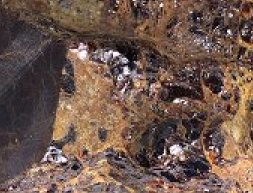
October Editorial

October Editorial
A Glimpse into the mantle zone |
|
To really know what is happening in the depths of the Earth's mantle, scientists have relied mostly on seismic imaging, various studies of diamond micro structure, and experimental simulation. So finding rocks which had come from a depth of about 670 km below the Earth's surface was a remarkable stroke of luck. The rocks were discovered on the small island of Malaita, in the Solomon Islands group by Professor Ken Collerson and colleagues from the University of Queensland and the University of California Santa Cruz. The depth from which the rocks originated could be assessed from the high percentage of silica bearing garnet in the composition of these rocks. As Professor Collerson explained at the time of the discovery: "As garnet experiences higher pressure, more silica can be forced into the crystal structure and it starts to substitute in different crystallographic positions," At the end what you end up with is a with is a garnet composition that has a lot of silica and a fairly low amount of aluminium and chromium. By looking at the percentage of silica in the garnet it is possible to estimate the pressure which the rock had to be under to force the silica inside. Professor Collerson and his colleagues estimated that the rocks were submitted to a pressure of approximately 23 gigapascals (that is a pressure of about 250 thousand times of that on rocks a few metres underground). This level of pressure is found in the transition zone between what is known as the upper and lower mantle of the Earth's crust. In addition to silica-rich garnet some samples contained micro-diamonds. Diamond-bearing rocks are predominantly found in the oldest (central) parts of continents in in vertical structures known as Kimberlite pipes. Kimbelites are igneous rocks composed predominantly of olivine phlogopite, pyroxene and garnet, but some of them also contain diamonds. Kimberlite pipes are the most important source of mined diamonds today. Prior to the discovery of the Malaita rocks they have never been seen in oceanic environments. It is believed that the Malaita rocks were catapulted to the surface about 34 million years ago during a volcanic eruption through deep volcanic pipes not dissimilar to Kimberlite pipes. |
| _______________________________ | ||||
| Home | | | Shopping | | | Database |
© Biscuit Software 2004-2015
All rights reserved